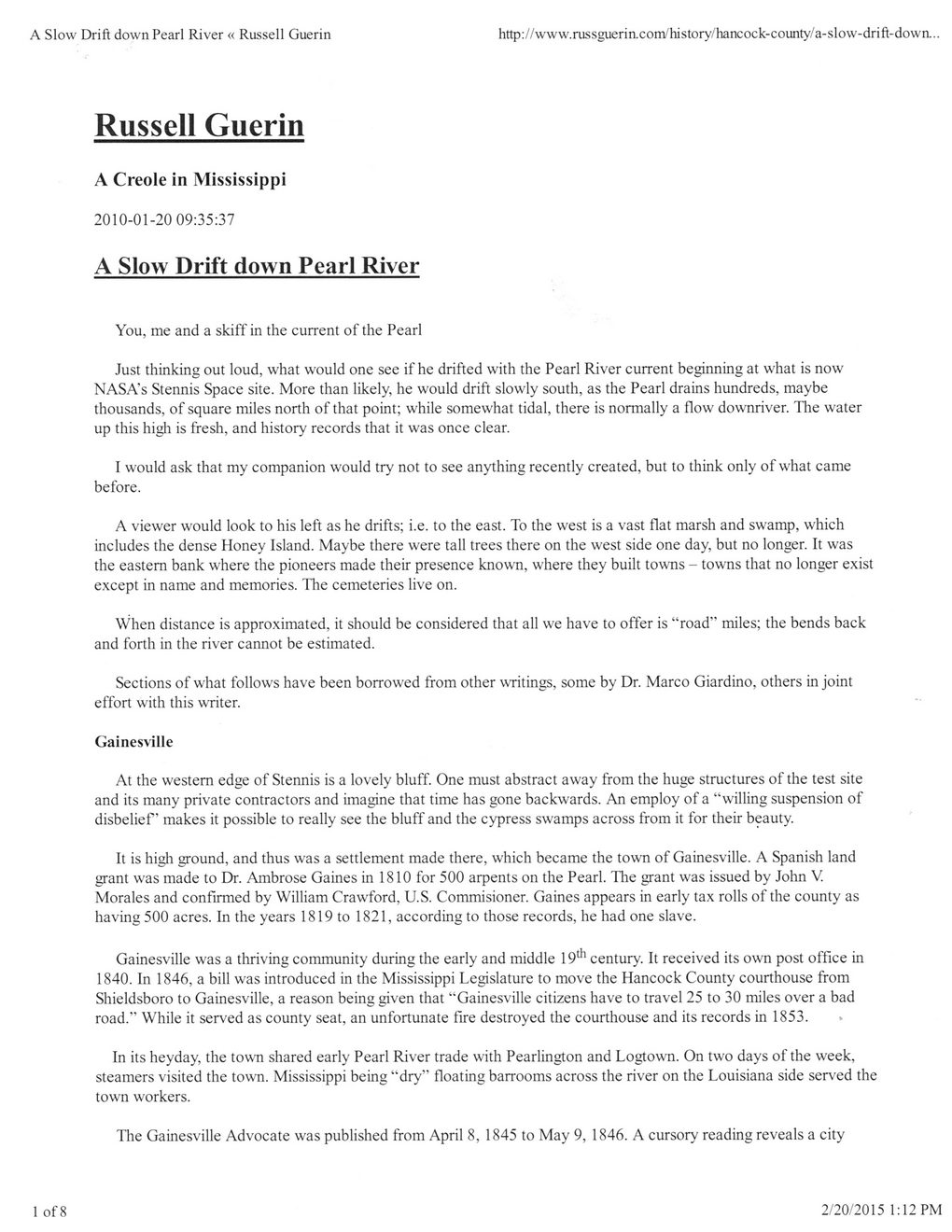This text was obtained via automated optical character recognition.
It has not been edited and may therefore contain several errors.
A Slow Drift down Pearl River « Russell Guerin http://www.russguerin.com/history/hancock-county/a-slow-drift-down. Russell Guerin A Creole in Mississippi 2010-01-20 09:35:37 A Slow Drift down Pearl River You, me and a skiff in the current of the Pearl Just thinking out loud, what would one see if he drifted with the Pearl River current beginning at what is now NASA’s Stennis Space site. More than likely, he would drift slowly south, as the Pearl drains hundreds, maybe thousands, of square miles north of that point; while somewhat tidal, there is normally a flow downriver. The water up this high is fresh, and history records that it was once clear. I would ask that my companion would try not to see anything recently created, but to think only of what came before. A viewer would look to his left as he drifts; i.e. to the east. To the west is a vast flat marsh and swamp, which includes the dense Honey Island. Maybe there were tall trees there on the west side one day, but no longer. It was the eastern bank where the pioneers made their presence known, where they built towns - towns that no longer exist except in name and memories. The cemeteries live on. When distance is approximated, it should be considered that all we have to offer is “road” miles; the bends back and forth in the river cannot be estimated. Sections of what follows have been borrowed from other writings, some by Dr. Marco Giardino, others in joint effort with this writer. Gainesville At the western edge of Stennis is a lovely bluff. One must abstract away from the huge structures of the test site and its many private contractors and imagine that time has gone backwards. An employ of a “willing suspension of disbelief’ makes it possible to really see the bluff and the cypress swamps across from it for their beauty. It is high ground, and thus was a settlement made there, which became the town of Gainesville. A Spanish land grant was made to Dr. Ambrose Gaines in 1810 for 500 arpents on the Pearl. The grant was issued by John V Morales and confirmed by William Crawford, U.S. Commisioner. Gaines appears in early tax rolls of the county as having 500 acres. In the years 1819 to 1821, according to those records, he had one slave. Gainesville was a thriving community during the early and middle 19th century. It received its own post office in 1840. In 1846, a bill was introduced in the Mississippi Legislature to move the Hancock County courthouse from Shieldsboro to Gainesville, a reason being given that “Gainesville citizens have to travel 25 to 30 miles over a bad road.” While it served as county seat, an unfortunate fire destroyed the courthouse and its records in 1853. In its heyday, the town shared early Pearl River trade with Pearlington and Logtown. On two days of the week, steamers visited the town. Mississippi being “dry” floating barrooms across the river on the Louisiana side served the town workers. The Gainesville Advocate was published from April 8, 1845 to May 9, 1846. A cursory reading reveals a city 1 of 8 2/20/2015 1:12 PM

Pearl River Document (001)